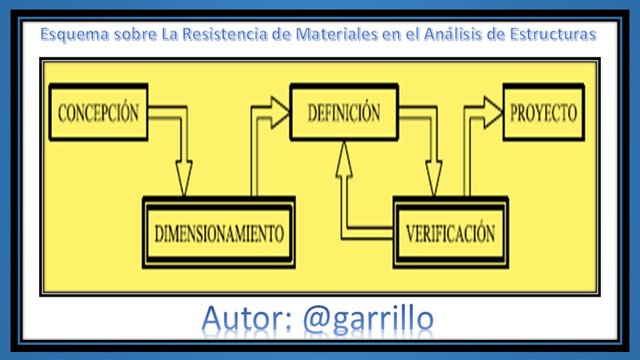Analysis of the basic fundamentals of the resistance of materials
Introduction
Objective that pursues the study and application of the resistance of materials
Within the engineering has always sought that engineers try to respond to the guarantee that must exist at the time of conducting an operational activity, where they are involved loading efforts on materials that can support this load, without accidents occur that occur they affect the safety of workers, apart from this the already completed design of bridges, buildings among others are commonly supporting loads that deform these materials, but that adequate knowledge about the resistance of materials helps the engineer to be able to design structures that manage to withstand these efforts to which they are going to be subjected.
Therefore I can add that the resistance of materials seeks within its fundamental objectives serve as tools to mechanical engineers, civil, electrical, oil, food to be able to design correctly structures based on the load they can support. In this design the engineers must guarantee the conditions of resistance and rigidity of the material to which it will be subjected by a load, in turn it helps to a rigorous analysis of the structure, so that the whole fundamental objective can be reduced to saying that the types of problems that can occur within engineering in reference to the resistance of the materials goes directed to the dimension and verification of the structures.
An oriented way in which the engineer can have an idea of how the structure can be designed, is based on the conception of the same structure. In this conception phase, its categorization is determined and the actions that will act on it are identified. This prior identification is done in a shallow way, since the actual identification depends on the final shape and dimensions of the structure. It is at this moment where the resistance of materials plays a preponderant role, since through the knowledge that we have about the resistance of materials, the respective evaluations about the structural response of the corresponding structural predesign can be made. Depending on the results obtained, we proceed to the dimensioning of the structural elements, that is, to give concrete values to the dimensions of these. After the definition of the project, in this phase what is sought is to respond to the problems and requirements, however we have the premise and advantage that still in this phase can be modified or confirmed the various decisions taken in the previous phase. In any of the cases already in this part, the structural typology and the actions to be considered as own weight, live loads among others, are defined and specified. Finally, the model is verified, if this verification is satisfactory, the final project is drawn up, otherwise it will not be satisfactory, it will have to be returned to the definition phase, this procedure will be repeated repeatedly until all are satisfied. the design requirements.
Below I show the following scheme where you can see the role that the resistance of materials plays in the design of structures:
Conclusions
The resistance of materials is a discipline within the mechanics of solids that gives us engineers the ability to learn and master the technical aspects necessary to design structures within the framework of engineering that are consistent with certain levels of safety , conserving in the design of the structures a methodological framework that provides a level of resistance of the structures to the loads that can be submitted during a series of point loads.
The resistance of materials uses within its basic technical aspects a series of simplified models, through these simplified models what is sought is to ensure that the structures can withstand forces and applied forces without reaching their limit of fracture or deformation.
Not only the most classic engineering for the application of the resistance of materials such as mechanical engineering, structural engineering and industrial engineering are usually the professional fields within engineering that need this part of the mechanics of solids, in this case I will cite my profession as it is the food engineering, conducting an analysis and exhaustive study I can conclude that food engineering needs the study of the resistance of materials, because at some point in the designs you have to do in the food processing industry, the food engineer must apply the knowledge in the resistance of materials to design the load capacity that can hold a certain machine eg tomato conveyor, where it is evident that it supports weight, and therefore it is necessary Know how much weight you can hold to not deform. In particular in the curriculum of the study curriculum I did not have any curricular unit that had to do with solid mechanics, however during my academic training I was in charge of studying all these aspects related to the resistance of materials individually, just I hope that at the moment of having a job in the industry I can use them.
Sources consulted
Mechanics of structures Book 1. Resistance of materials. Authors: Miguel Cervera Ruiz. Elena Blanco Díaz Editorial UPC. Spain 2001.




Congratulations @garrillo! You have completed the following achievement on the Steem blockchain and have been rewarded with new badge(s) :
Click here to view your Board of Honor
If you no longer want to receive notifications, reply to this comment with the word
STOPDo not miss the last post from @steemitboard:
Congratulations @garrillo! You have completed the following achievement on the Steem blockchain and have been rewarded with new badge(s) :
Click here to view your Board of Honor
If you no longer want to receive notifications, reply to this comment with the word
STOPCongratulations @garrillo! You received a personal award!
You can view your badges on your Steem Board and compare to others on the Steem Ranking
Vote for @Steemitboard as a witness to get one more award and increased upvotes!